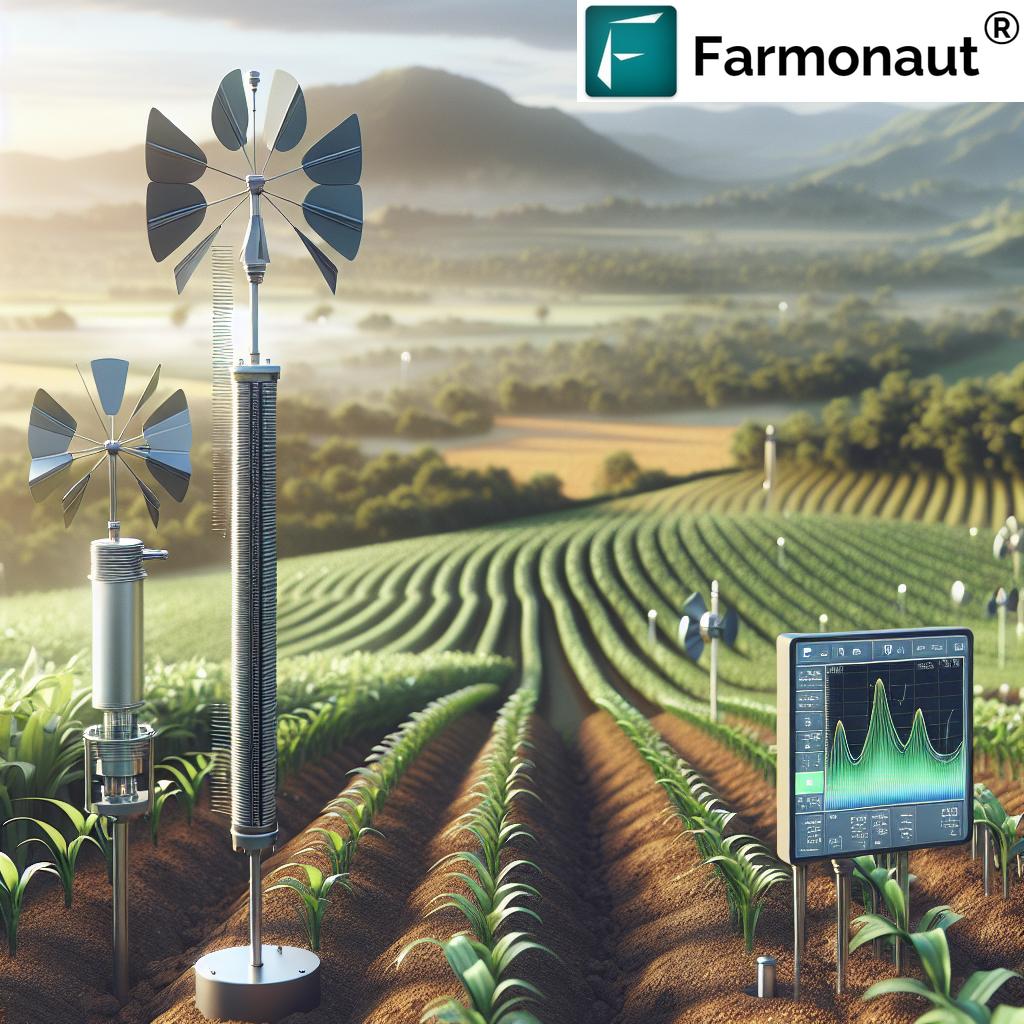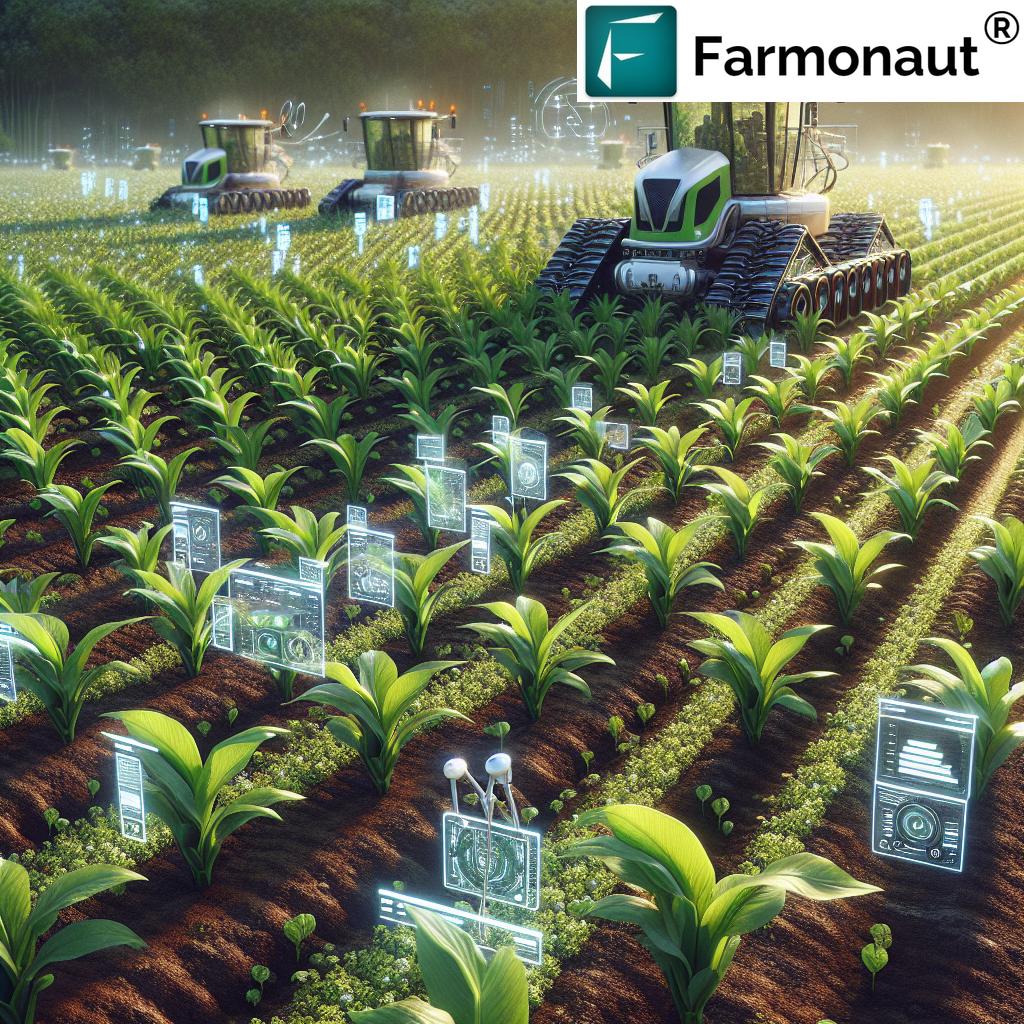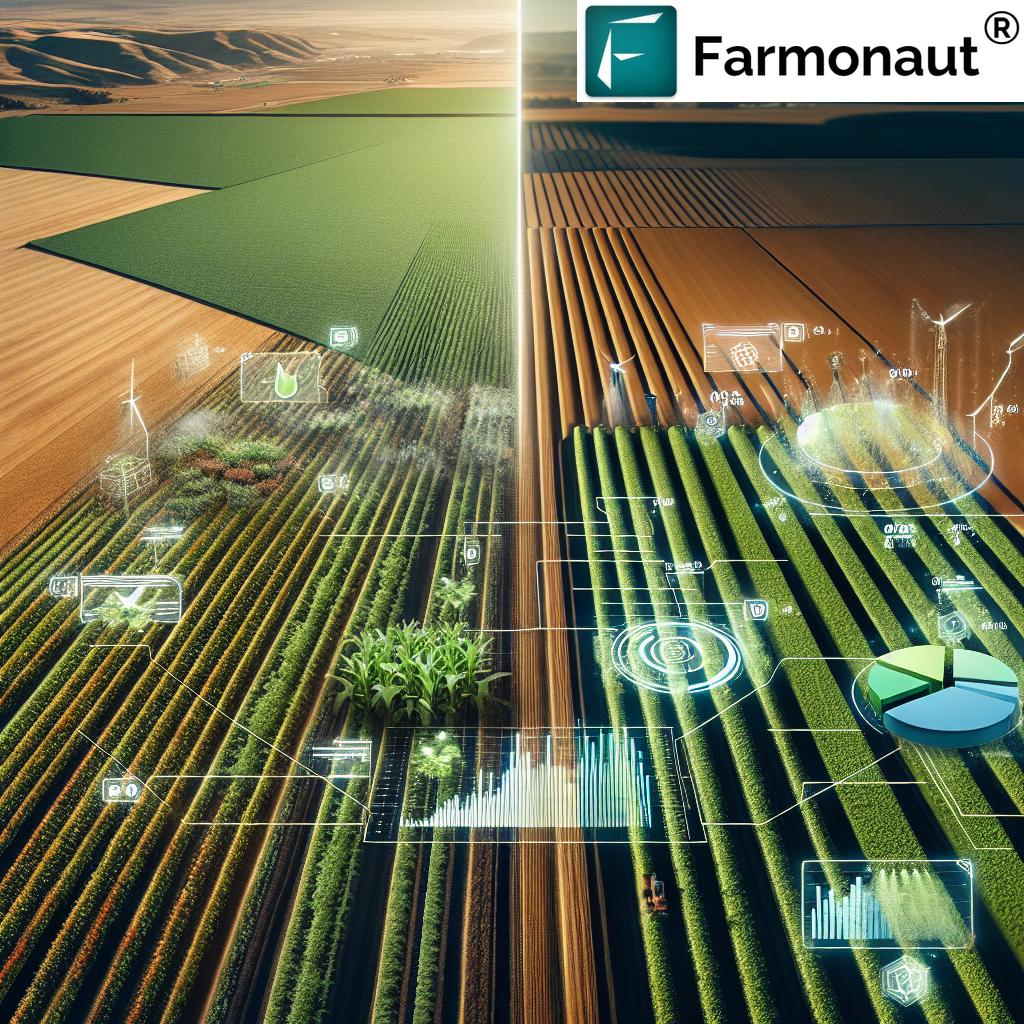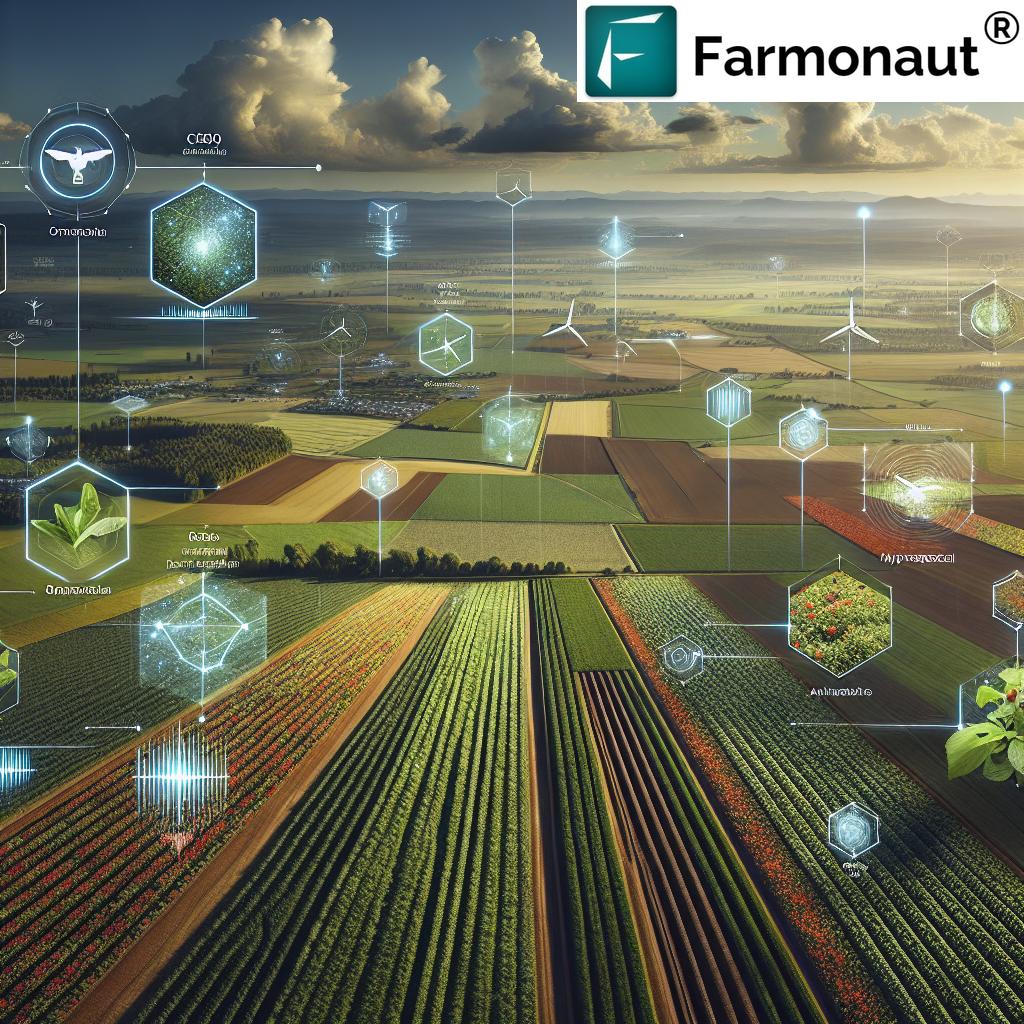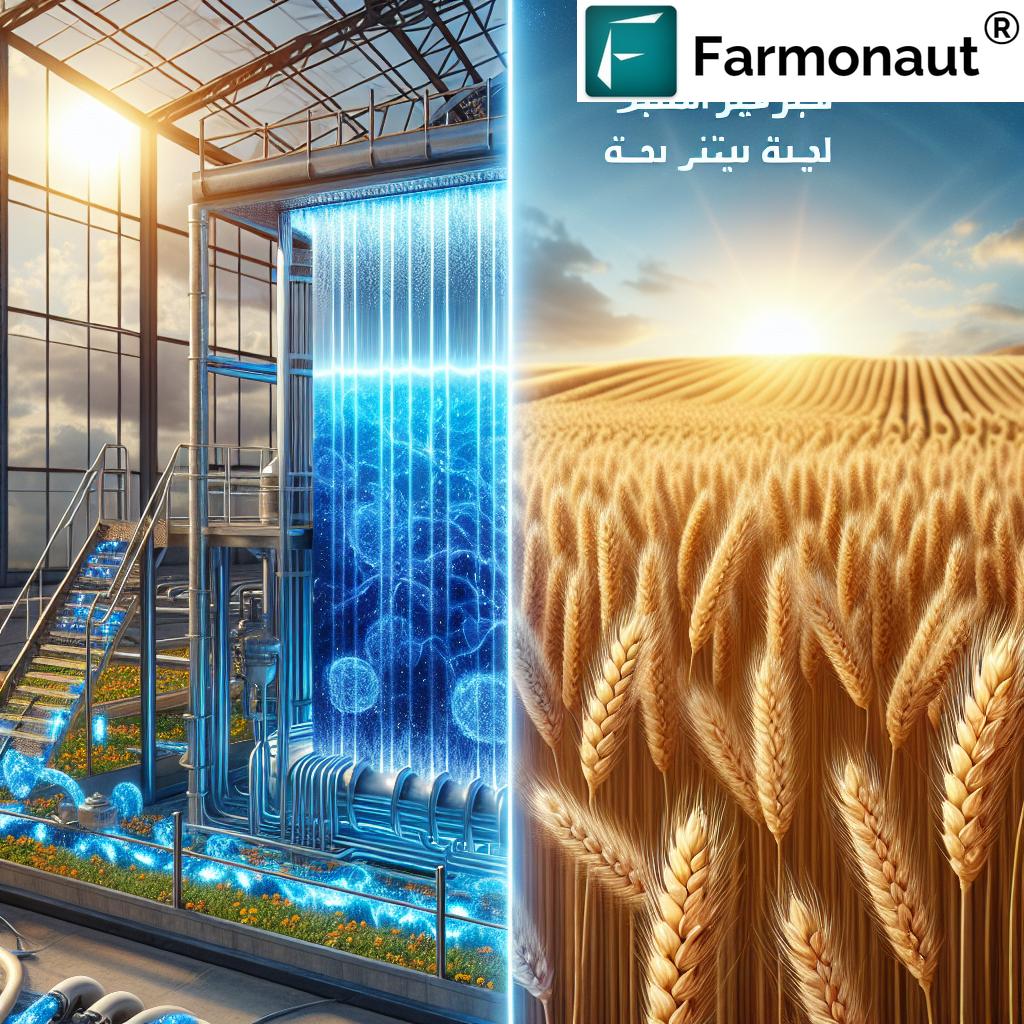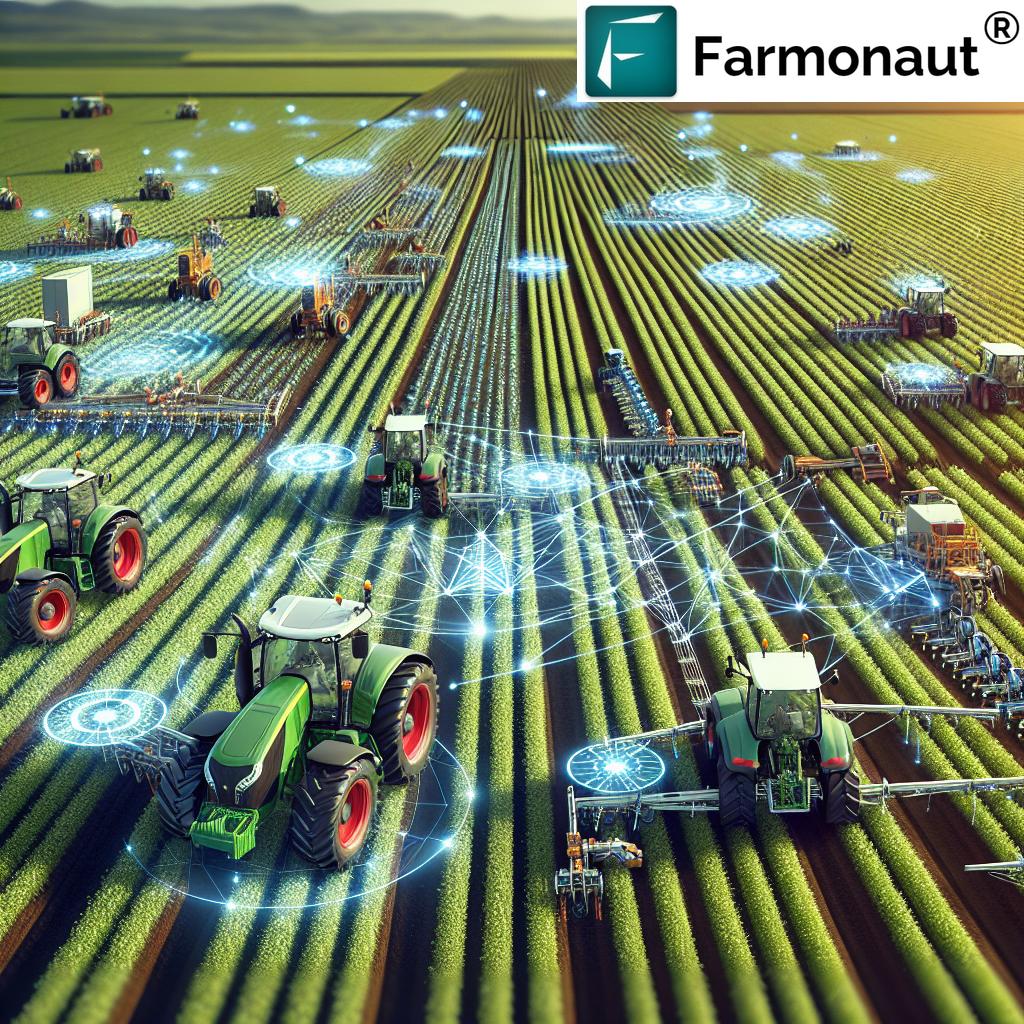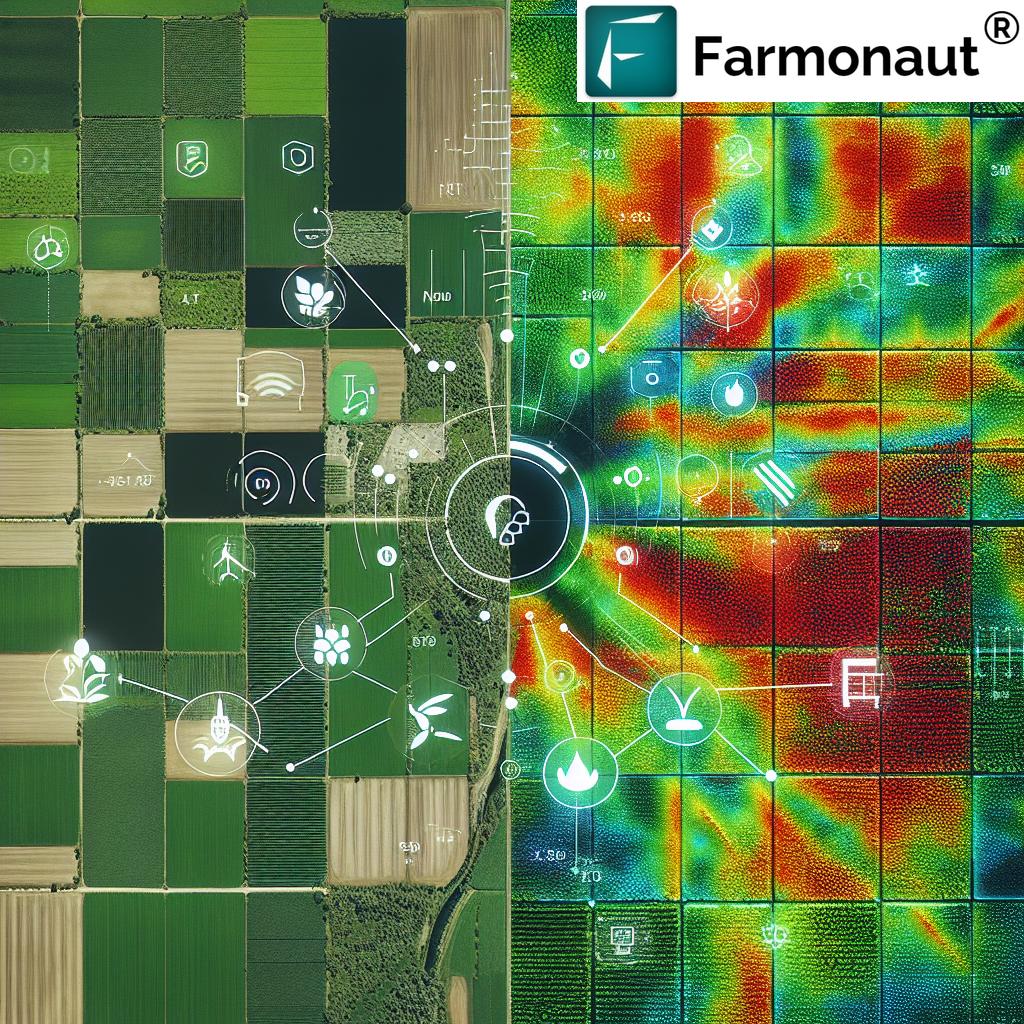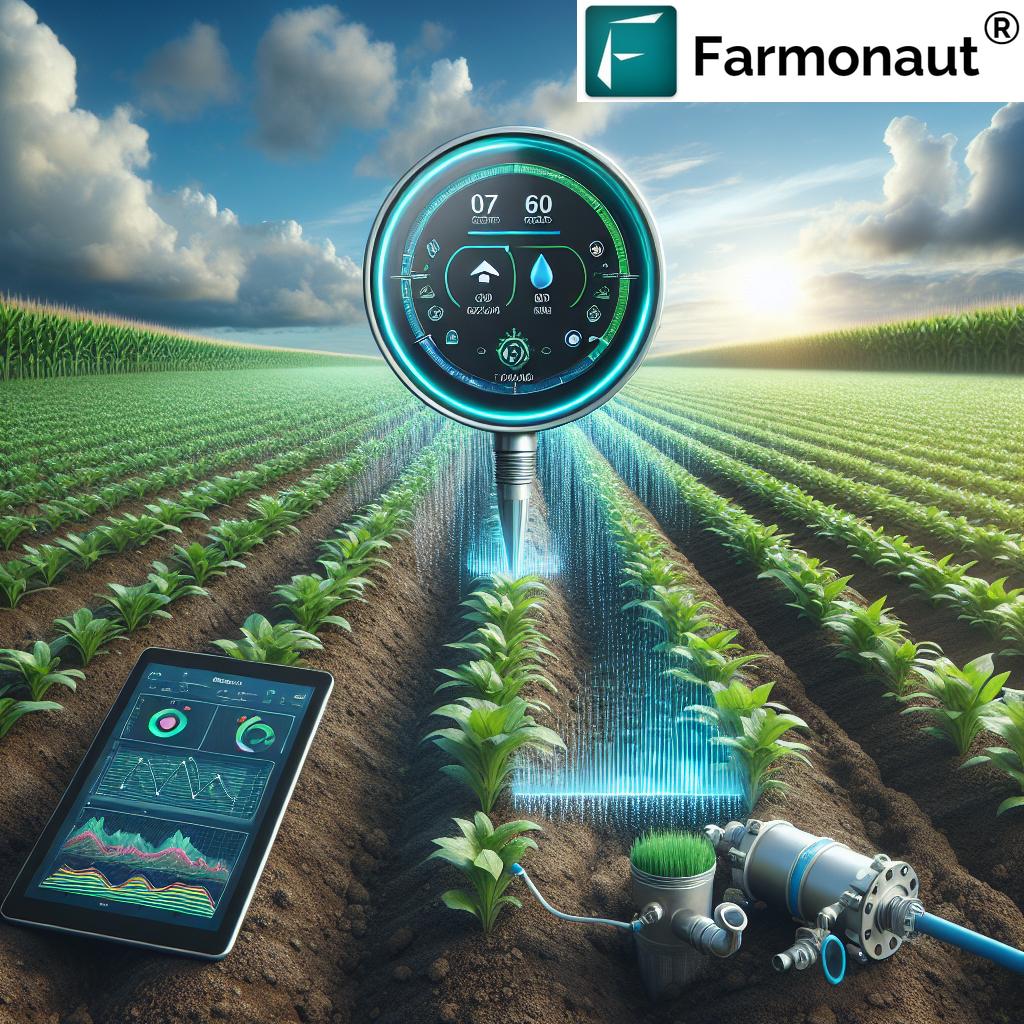Table of Contents
- Introduction: The Role of Wind Measurement in Precision Agriculture
- Importance of Wind Measurement in Precision Agriculture
- Wind Measurement in Agriculture: 7 Top Methods
- Comparative Table: Seven Wind Measurement Methods
- Applications of Wind Measurement Technologies in Agriculture
- Integration with IoT and Data Analytics
- Challenges, Research, and Future Direction
- Farmonaut Solutions: Satellite Data, Weather, and Smart Farm Management
- Frequently Asked Questions
- Conclusion: Embracing Innovation in Wind Measurement
“Anemometers can measure wind speeds as low as 0.1 m/s, crucial for precision irrigation scheduling in agriculture.”
Wind Measurement in Precision Agriculture: 7 Top Methods
The intersection of wind measurement in agriculture, precision technologies, and real-time data analytics is revolutionizing modern farming. Wind plays a significant—yet often underestimated—role in shaping farming practices, influencing everything from irrigation management and soil erosion prevention to the fine-tuning of crop spraying and the optimization of resource use.
With the global drive toward sustainable agriculture, farmers and foresters alike are adopting advanced wind measurement instruments and IoT weather stations for agriculture to stay ahead of fluctuating environmental conditions. By leveraging real-time weather data for crop management, agricultural professionals can make informed, data-driven decisions that boost yields, safeguard their resources, and mitigate environmental impact.
The Importance of Wind Measurement in Precision Agriculture
Understanding wind patterns is integral to modern agricultural management. Wind measurement is more than just a weather update—it’s a pivotal factor influencing numerous critical aspects of farming:
- Pesticide and Fertilizer Application: Wind affects how chemicals such as pesticides and fertilizers are dispersed. Accurately measuring wind speed and direction helps schedule applications to minimize drift and ensure fertilizers reach their intended targets, reducing both costs and environmental contamination.
- Irrigation Management: Wind influences evaporation rates. Knowing current wind conditions allows farmers to adjust irrigation schedules for optimal moisture levels—conserving water and maintaining healthy crops.
- Soil Erosion Control: High winds can lead to soil erosion, especially in areas with sparse vegetation. Monitoring wind speed enables the implementation of protective measures (like windbreaks and cover crops) to safeguard soil health.
- Frost Protection: Wind can mitigate frost damage by promoting air circulation. Wind machines are used in vineyards and orchards during cold nights to prevent cold air from settling and damaging sensitive crops.
Wind Measurement in Agriculture: 7 Top Methods
Accurate wind measurement in agriculture relies on specialized devices and technologies designed for high precision and reliability—even under harsh environmental conditions. Below are the seven leading methods used by agricultural professionals for wind speed monitoring, data integration, and optimizing management of resources:
-
1. Mechanical Cup Anemometers
The classic mechanical anemometer features three or four cups mounted on arms that spin as wind passes. The rotation speed is directly proportional to wind speed. Due to their affordability and robustness, they have long been a trusted instrument for on-farm wind measurement. However, their moving parts require occasional maintenance and may be less accurate at lower speeds.
-
2. Propeller/Vane Anemometers
These devices combine a propeller (for measuring wind speed) with a vaned tail (for indicating wind direction). They are highly sensitive, suitable for highly variable winds, and provide directionality data crucial for pesticide spraying and other agrochemical applications.
-
3. Ultrasonic Anemometers
A modern, maintenance-free solution, ultrasonic anemometers for farming use sound waves to measure wind speed and direction—with no moving parts. They boast excellent accuracy, real-time data, and are ideal for integration with IoT weather stations for agriculture. This technology is especially useful for advanced crop management practices and precision agriculture technologies.
-
4. Hot-Wire (Thermal) Anemometers
Hot-wire anemometers operate by measuring the cooling effect of air flow over a thin, heated wire. Suitable for research and detailed wind analysis, they deliver high precision, particularly in low-speed environments. Recent research in calibrating these instruments has improved their use in dynamic agricultural environments.
-
5. Optical (Laser-Based) Anemometers
Optical anemometers employ light beams to detect the speed and direction of airborne particles—offering robust accuracy and demand minimal maintenance. While these are generally used in research and high-tech farm setups, technological advancements have expanded their potential in mainstream agricultural applications.
-
6. Integrated Weather Stations
Weather stations combine wind sensors with other instruments (measuring temperature, humidity, pressure, and more) and are central to environmental monitoring. Many systems link to cloud platforms for real-time weather data for crop management.
Envira and similar brands offer wireless, IoT-enabled agricultural weather stations capable of transmitting data directly to farmers and farm management platforms.
-
7. Portable and Handheld Wind Meters
Compact, battery-powered devices are a practical solution for farmers who need on-demand wind measurement across various field sections. These meters are quick, simple to operate, and can be used to confirm localized wind conditions before sensitive applications such as pesticide spraying or irrigation scheduling.
“Ultrasonic wind sensors provide real-time wind data updates every second, enhancing accuracy in crop management decisions.”
Comparative Table: Seven Wind Measurement Methods
| Method Name | Principle of Operation | Estimated Cost | Accuracy | Data Update Frequency | Recommended Use Case | Technology Adoption Level |
|---|---|---|---|---|---|---|
| Mechanical Cup Anemometers | Rotating cups driven by wind; speed proportional to cup rotation | Low ($50–$250) | ±0.5 m/s | Realtime / 1s-5s | Irrigation scheduling, general wind monitoring | Traditional |
| Propeller/Vane Anemometers | Propeller spins by wind to measure speed; vane shows direction | Low-Medium ($100–$500) | ±0.3 m/s | Realtime | Optimizing pesticide spraying, fertilization | Traditional |
| Ultrasonic Anemometers | Measures transit time of ultrasonic pulses affected by wind | Medium-High ($400–$2,000) | ±0.1 m/s | Realtime / up to every 1s | Precision agriculture, crop management | Modern/Innovative |
| Hot-Wire (Thermal) Anemometers | Change in resistance of heated wire as wind cools it | Medium ($200–$1,000) | ±0.05 m/s | Realtime | Detailed wind research, microclimate studies | Research/Innovative |
| Optical Anemometers | Detects wind by analyzing light changes from moving particles | High ($500–$3,000+) | ±0.01 m/s | Realtime | Research, advanced automation | Innovative |
| Integrated Weather Stations | Multiple sensors (wind, temp, humidity, pressure) with digital data logging | Medium-High ($800–$4,000+) | ±0.2 m/s | Realtime/Customizable | Farm-wide weather monitoring, predictive planning | Modern |
| Portable Wind/Handheld Meters | Compact devices for spot-check wind measurement | Low ($25–$150) | ±0.5 m/s | On-demand | Field checks, quick weather assessment | Traditional/Modern |
Applications of Wind Measurement Technologies in Precision Agriculture
The integration of advanced wind measurement instruments and data analytics into daily farm operations enables agricultural professionals to take pre-emptive, informed action. Here’s how wind measurement in agriculture directly empowers crop management and resource optimization:
Optimizing Pesticide Spraying with Wind Conditions
- Wind speed and direction directly influence the effectiveness and safety of pesticide and fertilizer application. Scheduled spraying during calm, optimal winds ensures chemicals hit their intended targets, minimizing off-target drift and environmental contamination.
- Integrated anemometers—including ultrasonic and propeller/vane types—offer real-time data to guide farmers on safe application windows.
Irrigation Management Using Wind Data
- Wind increases evaporation rates—which can prematurely dry out soils after irrigation. By continuously monitoring wind, farmers adjust irrigation schedules to conserve water and maintain soil moisture levels.
- IoT weather stations for agriculture can sync wind data with soil moisture sensors for holistic irrigation control.
Soil Erosion Prevention and Protective Measures
- Monitoring wind speed and gusts helps forecast potential soil erosion events. In threatened areas, practices such as planting windbreaks and introducing cover crops are implemented as protective measures.
- Weather data integration allows for proactive implementation—helping preserve topsoil, forest health, and long-term farm productivity.
Frost Management in Vineyards and Orchards
- In regions where late spring or autumn frost threatens delicate crops, wind machines can be controlled using real-time wind speed monitoring. Prompt activation ensures even distribution of warmer air, preventing cold-induced crop damage.
Forest and Plantation Management
- In forestry and plantation settings, wind measurement helps predict fire spread, plan controlled burns, select ideal locations for new plantings, and manage pest outbreaks influenced by wind-dispersed spores or insects.
Farmonaut‘s Crop Plantation & Forest Advisory leverages satellite and environmental data to help farmers and foresters make data-driven decisions — such as when to plant windbreaks or schedule farming operations under optimal wind conditions. This results in better resource use and increased crop resilience.
Integration with IoT and Data Analytics
Integrating wind measurement instruments with IoT platforms brings unprecedented optimization and control to agricultural management:
- Real-time Monitoring: IoT weather stations for agriculture feature wireless, automatic data transfer, enabling continuous wind speed monitoring for farmers. This allows for instant adjustments in on-farm operations.
- Data Visualization and Analytics: User-friendly dashboards visualize trends in wind speed, direction, temperature, and humidity alongside other environmental parameters. This supports both day-to-day actions and long-term strategic planning.
- Predictive Analytics: By integrating wind measurement data with weather forecasts and crop health monitoring (for example, via our satellite-based Farmonaut solutions), predictive models are built for irrigation timing, resource allocation, and risk mitigation.
Farmonaut customers leverage IoT-driven weather data and API weather integrations to access accurate, site-specific wind and environmental data for crop management.
For technical teams, Farmonaut’s API developer documentation simplifies integration of precision agriculture weather and satellite data directly into farm management software.
Farmonaut‘s product traceability platform uses blockchain to transparently record crop journeys, including data from weather and wind monitoring events. Brands and cooperatives seeking supply chain reliability benefit from this level of auditing and data-driven trust.
Farmonaut also provides carbon footprinting tools — empowering climate-smart agriculture by tracking emissions, resource use, and the impact of weather events such as strong winds on fuel consumption and environmental outcomes.
Challenges, Research, and Future Direction in Wind Measurement for Precision Agriculture
While the benefits of wind measurement technologies are clear, there remain strategic and operational challenges to widespread adoption:
- Calibration and Accuracy: Precision agriculture relies on accurate wind data; constant calibration is required to account for environmental variables such as temperature and humidity. New research is refining sensors’ reliability using advanced calibration—like Gaussian Process Regression for hot-wire anemometers.
- Integration Complexity: The addition of wind sensors to existing farm systems often demands technical expertise, especially as farms integrate IoT and satellite platforms for data analytics.
- Cost Considerations: Advanced instruments such as ultrasonic or optical anemometers are more expensive than traditional mechanical devices, potentially limiting access for smallholder farmers.
- Data Overload: Aggregating, filtering, and interpreting real-time weather and wind data from multiple sources can become overwhelming without intuitive analytics tools.
Future directions will likely focus on:
- Reducing sensor costs to improve accessibility
- Developing user-friendly platforms for non-experts
- Further enhancing the integration of wind sensors with AI and satellite-based agricultural management systems
- More automation in calibration and maintenance
Farmonaut‘s Large Scale Farm Management Platform is designed with scalability and integration in mind, supporting the deployment of advanced weather and wind monitoring systems alongside satellite-derived field analytics.
Farmonaut Solutions: Satellite Data, Weather, and Smart Farm Management
At Farmonaut, our vision is to democratize precision agriculture by integrating comprehensive weather and wind measurement data with satellite-based crop surveillance, AI-driven advisory, and intuitive digital tools.
Our platform empowers farmers and agribusinesses to make data-driven decisions by delivering:
- Satellite Crop Health Monitoring: Real-time imagery combined with wind and weather data to support proactive crop management and resource allocation.
- AI Advisory Systems: Our Jeevn AI module analyzes wind and environmental patterns, offering actionable agronomic guidance for pesticide scheduling, irrigation management, and pest risk forecasting.
- API & Ecosystem Integration: Farmonaut APIs provide seamless integration of wind, soil, and weather data into any farm management application, supporting both smallholders and enterprise operations (API access here).
- Resource and Fleet Tools: Our fleet management module assists in timely deployment of mobile wind-sensing and crop care equipment, maximizing operational efficiency.
- Supply Chain and Sustainability Solutions: Blockchain-based traceability and carbon tracking enable stakeholders to prove compliance and build resilient, climate-smart business profiles.
Whether you’re an individual farmer, manage an agribusiness, or operate at government scale, our subscription-based solutions adapt to your size and vision.
Frequently Asked Questions (FAQ)
What is the best wind measurement method for small farms?
Mechanical cup or low-cost propeller anemometers still serve most small-scale farms effectively. However, as prices drop, many small farms are also starting to adopt portable handheld meters and entry-level ultrasonic sensors for real-time accuracy in precision agriculture.
Why is wind measurement important for irrigation management?
Wind affects the evaporation rates of irrigation water, often increasing water loss from soil and plant surfaces. Integrating wind data with soil moisture metrics enables more precise irrigation scheduling—minimizing waste and maintaining optimal crop moisture levels.
How does real-time weather data improve crop management?
Real-time updates allow farmers to respond immediately to changing environmental conditions—such as shifting winds before spraying or predicted frost events. Automated alerts and data feeds can help safeguard crop health and maximize resource use.
What is the accuracy of ultrasonic anemometers for farming?
High-quality ultrasonic anemometers typically deliver accuracy of ±0.1 m/s or better, with updates every second, making them suitable for real-time decision-making in precision agriculture technologies.
Can wind measurement help prevent soil erosion?
Yes. By predicting high-risk wind events and ongoing wind exposure, farmers can plant windbreaks or cover crops at strategic times and locations—enhancing soil retention and reducing long-term nutrient loss.
How does Farmonaut support wind & weather data integration?
Farmonaut provides both app and API-based access to weather, wind, and satellite data. This enables seamless integration with existing farm management solutions or field operations, supporting smarter, data-driven decisions across scales of agriculture.
Conclusion: Embracing Innovation in Wind Measurement
Accurate wind measurement in precision agriculture is foundational to optimizing resources, reducing risk, and building resilient food systems. As technologies evolve—blending advanced anemometers, integrated IoT sensors, and powerful data analytics—the ability to monitor and act on wind conditions becomes available to every farm, from rural plots to large-scale agricultural enterprises.
Wind is more than a weather statistic—its measurement now directly shapes on-the-ground actions, from irrigation scheduling to soil erosion prevention, and supports the drive toward sustainable, high-yield farming.
By actively embracing modern wind measurement systems, farmers and foresters can seize control of their operations, improve their stewardship of the land, and ensure the health of both crops and soil for generations to come.
As an agricultural technology pioneer, Farmonaut remains committed to delivering scalable, affordable precision agriculture technologies to growers worldwide—empowering informed, science-based decisions in every field.


